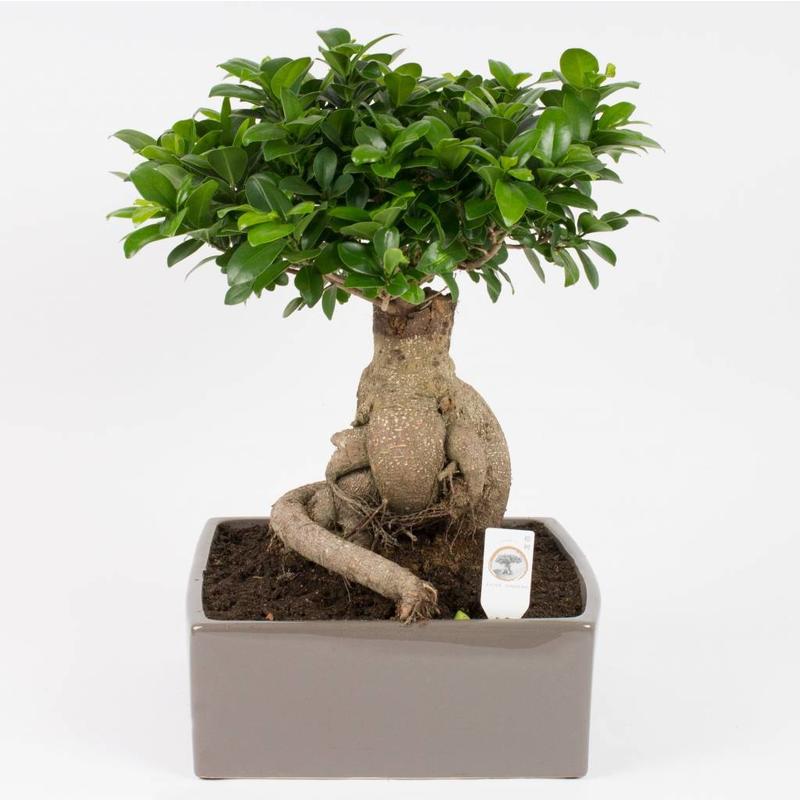
Bonsai ficus ginseng City Plante guide de permaculture
Ficus Ginseng Bonsai Care About The Ficus Ginseng Bonsai Tree Native to Malaysia, Taiwan and other Southeast and East Asian countries, the Ginseng Ficus is an excellent choice for bonsai tree enthusiasts. Different than the Ficus Benjamin, the Ginseng Ficus will have two or more thick exposed aerial roots that appear to look more like tree trunks than a typical root. A Ginseng Ficus bonsai is.

Bonsai Ginseng Ficus Bonsai from
The Ficus Bonsai is the most popular species for beginners at Bonsai. Popular varieties are the Retusa and Ginseng. In this article we show you how to keep it alive and thriving! Care guide for the Ficus Bonsai tree (Retusa and Ginseng) - Bonsai Empire Home Techniques Bonsai tree care Placement Watering Fertilizing Repotting Soil Pot selection

Ginseng Ficus The Perfect Bonsai Tree for the Beginner Arsenal Fund
The Ficus Ginseng is easy to take care of and great for beginners. 1. How to take care of a Ficus Ginseng Bonsai Tree. In this plant care guide, we're going to look at how you can take care of a Ficus Ginseng, an indoor Bonsai Tree. A lot of Bonsai Trees grow outside, but a select few trees also do well indoors, like the Ficus Ginseng.

Ficus microcarpa 'Ginseng' bonsai ficus Ficus microcarpa, Ficus ginseng bonsai, Bonsai ficus
Ficus Ginseng Bonsai Trees are a popular type of indoor bonsai tree. They are easy to care for and make a great addition to any home. In this plant care guide, we're going to look at a few of the most important aspects of taking care of a Ficus Ginseng: Watering your Ficus Ginseng Sunlight exposure for your Ficus Ginseng

How To Grow A Ginseng Ficus Bonsai Grow A Bonsai Tree Ficus ginseng bonsai, Ficus bonsai
Ficus Ginseng Bonsai photo. The ficus microcarpa originates from Southeast Asia and is found growing in regions of India, as well as many other regions in Asia. When this tree is found growing naturally it can reach heights of 50 to 60 feet. The figs that grow on this tree are a natural food source for many of the animals in the area.
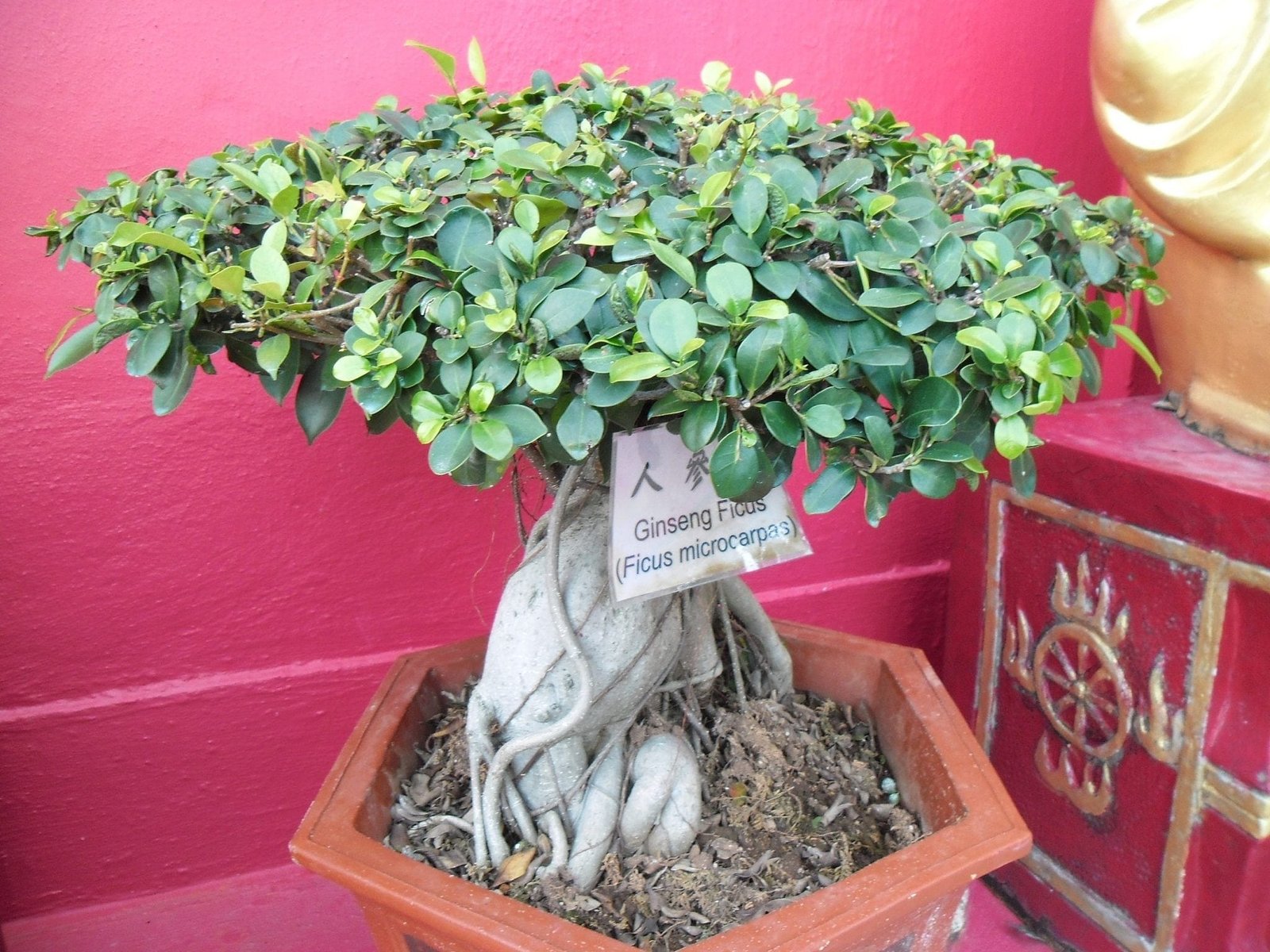
How To Grow A Ficus Ginseng Bonsai Tips And Techniques [2023 Update] BonsaiMadeEasy
Ziehen Sie Ihren Ficus Ginseng als Bonsai, dann können sie spezielle Bonsaierde verwenden. Eine Mischung aus Sand, Lehm und Erde ist ebenfalls geeignet und deutlich kostengünstiger. Als Zimmerpflanze gedeiht der Ficus Ginseng auch gut in handelsüblicher Blumenerde. Pflanzen und Umtopfen

Der Ficus Ginseng Tipps zur Pflege von diesem interessanten Bonsai
Ginseng Ficus Bonsai Care Growing and maintaining a ginseng ficus bonsai is easy if you follow some simple guidelines. Do not be afraid of entering this amazingly rewarding art form just because you are worried if you have heard it is hard. The Spruce / Evgeniya Vlasova Light Your bonsai will need a good amount of light.
Picked up this ficus ginseng today, any care tips? (Southwest Missouri, humid) Bonsai
At least six hours of bright, indirect light. Temp & Humidity: Prefers temperatures above 60ºF, but can handle temperatures as low as 40ºF; thrives in high humidity. Watering Needs: Aim to keep the soil relatively moist; water about once a week. Soil Preferences: Well-draining and well-aerated; pH between 6.0 and 7.00.
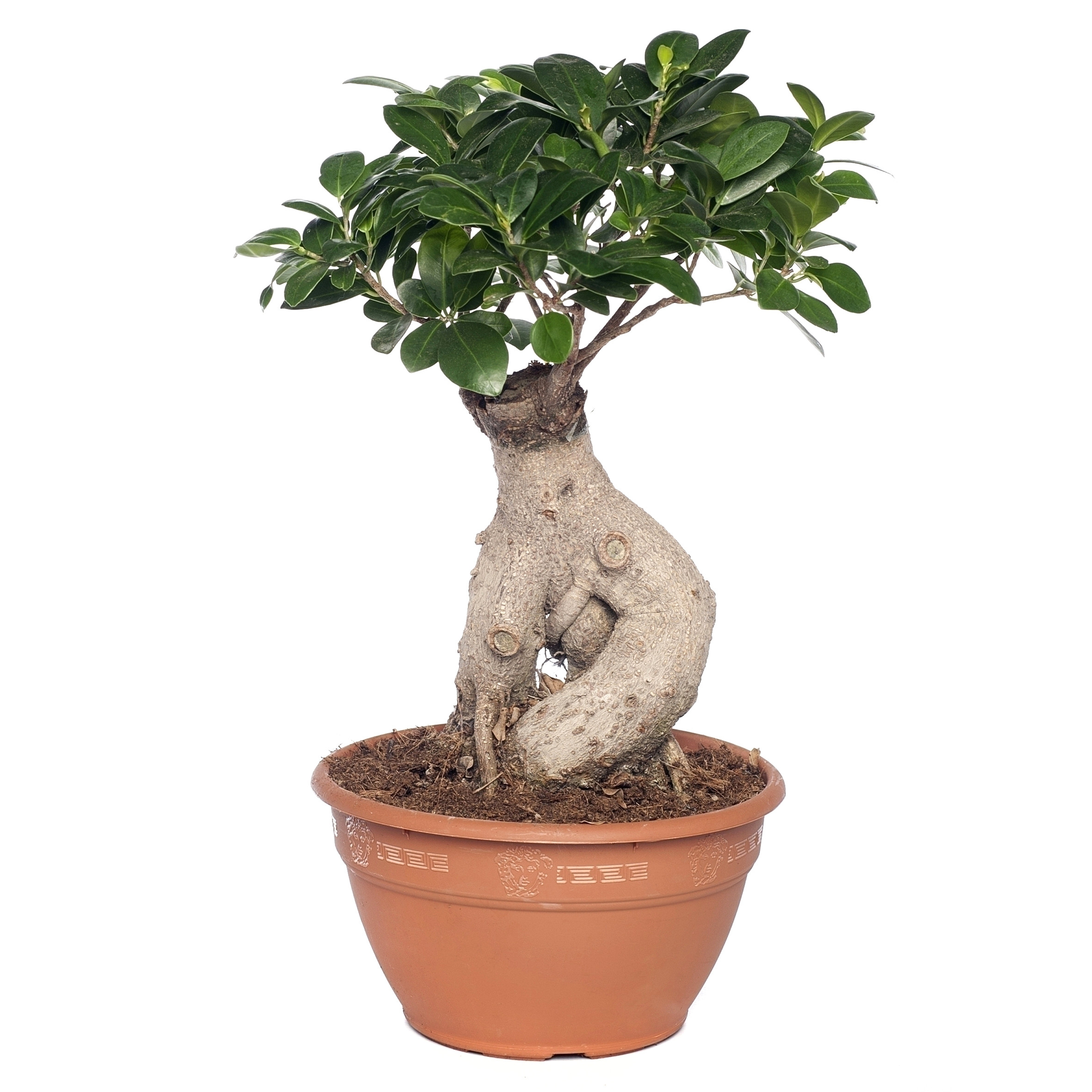
Ficus Microcarpa Ginseng Care AdinaPorter
Ficus Pruning Tips. Cut just before a growth node so that new growth will sprout there and cover the stump. Another tip is to remove a branch back to another branch that is one of its size. This will prevent unsightly stubs and restore the size and appearance of the ficus. Cut at a slant away from the node or secondary branch.

Ficus Ginseng are a popular, easytocarefor Bonsai cultivated in China and Malaysia. While
Umtopfen: im Frühling alle 2-3 Jahre; Wurzeln schneiden Gießen: bei Bedarf; Erde darf nicht austrocknen; Staunässe vermeiden Düngen: März bis September 14-tägig mit Flüssigdünger für Grünpflanzen oder Bonsaidünger Besprühen: regelmäßig mit zimmerwarmem, kalkfreien Wasser Moos: getrocknetes Moos auf Substrat verteilen; anfeuchten
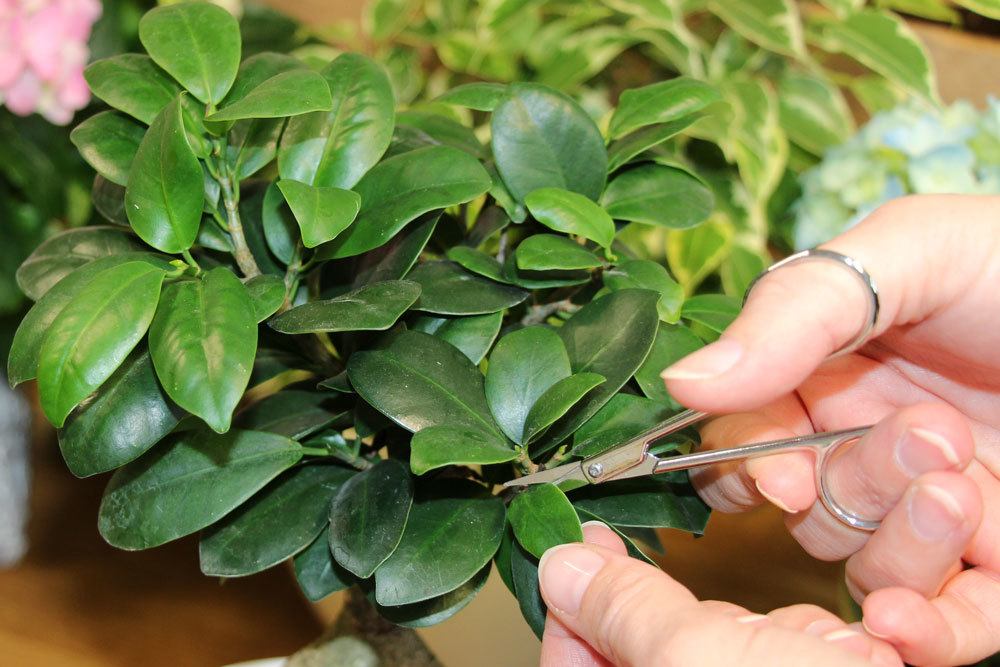
Ficus Ginseng als Bonsai Pflege und Schneiden
Der Ficus Ginseng gehört zu den wenigen Bäumen, die sich als Zimmer-Bonsai eignen. In der traditionellen Bonsai-Kunst, die seit Jahrtausenden in China und Japan zelebriert wird, dominieren Baumarten, die im Freien kultiviert werden. In Innenräumen würden sie auf Dauer zwangsläufig eingehen.
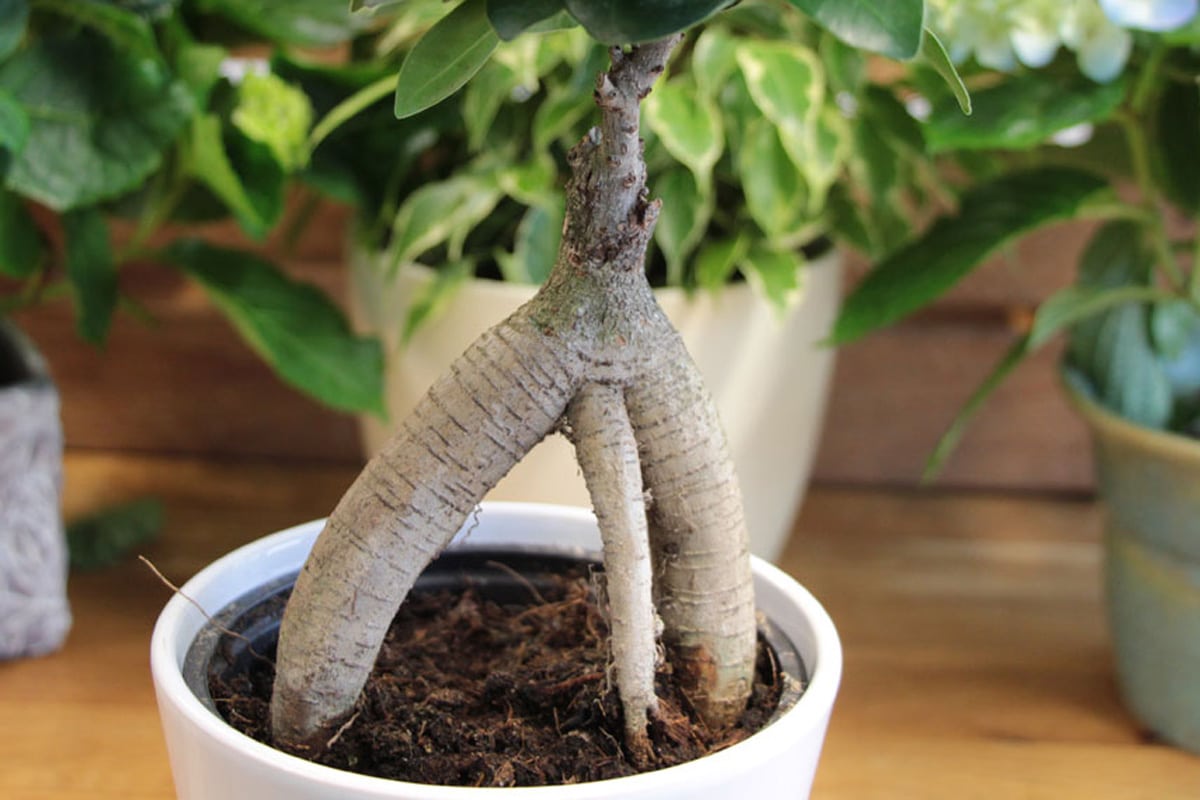
Ficus Ginseng PflegeAnleitung für den Bonsai Gartenlexikon.de
Ficus 'Ginseng' ist genau das Richtige für Freunde ausgefallener Zimmerpflanzen und Bonsai-Freunde. Das gilt es bei der Pflege zu beachten. Ulrike Hanninger 18 Apr, 2019 12:45 Uhr 8 Minuten Pflanzenfreude.de Ficus 'Ginseng' Inhaltsverzeichnis Steckbrief Herkunft Alle Inhalte Steckbrief Wuchstyp Kleinbaum Wuchseigenschaften bizarr aufrecht
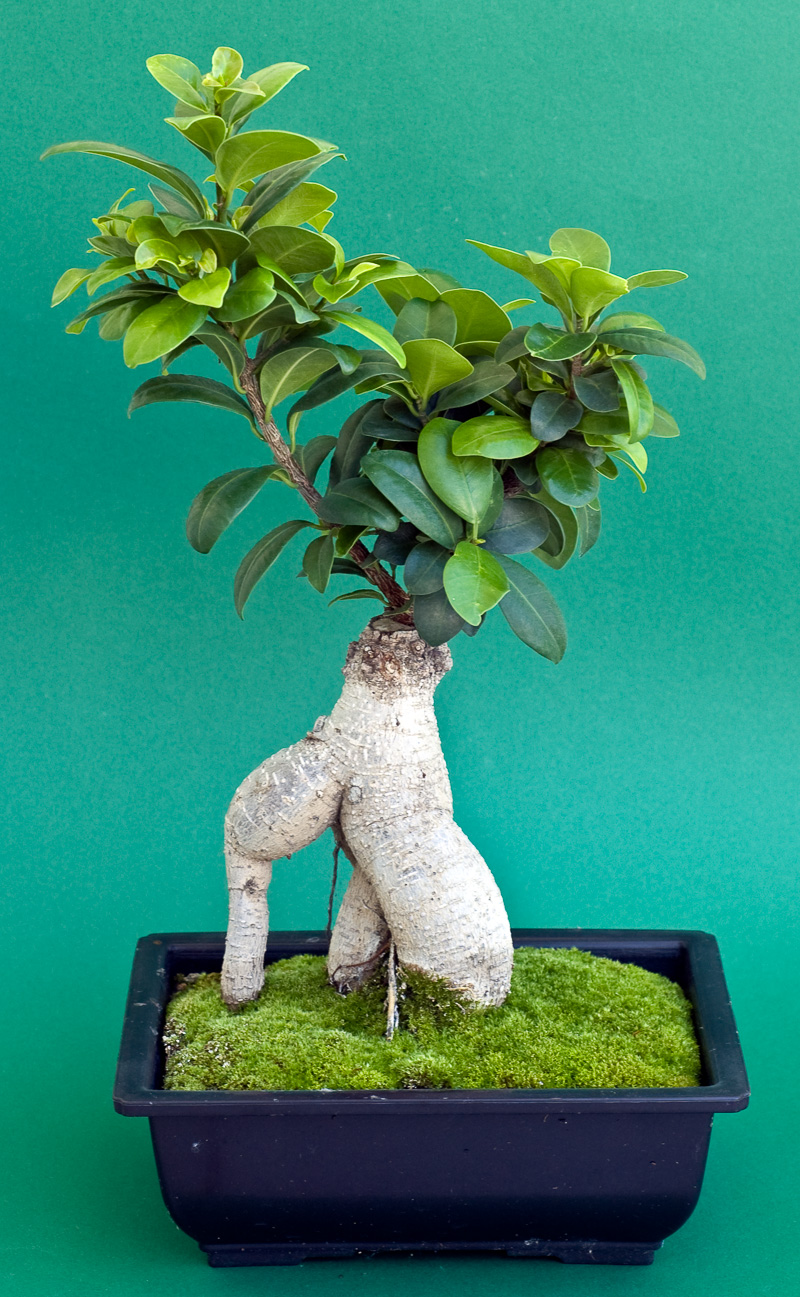
Ficus Ginseng Bonsai oder Baum?
Der Ficus Ginseng lässt sich gut als Bonsai kultivieren, da dieser relativ pflegeleicht ist. Selbst Anfänger in diesem Bereich werden mit dem zierlichen Bäumchen zurechtkommen, außerdem ist der Kaufpreis überschaubar. Der kleine Bonsai ist sehr dekorativ und passt sowohl ins Wohnzimmer als auch in ein Büro.
/growing-ginseng-ficus-bonsai-5083016-hero-3f7e663f55fc4470b2ec1e8f9fb45545.jpg)
How to Grow and Care for Ginseng Ficus Bonsai
Tip #2: Ginseng ficus trees are considerably more forgiving as compared to other bonsai species. They can still survive if watering is missed. These bonsai trees grow well if the compost soil is not allowed dry. Tip #3: Ginseng ficus bonsai trees should be watered regularly when the environment is warm.
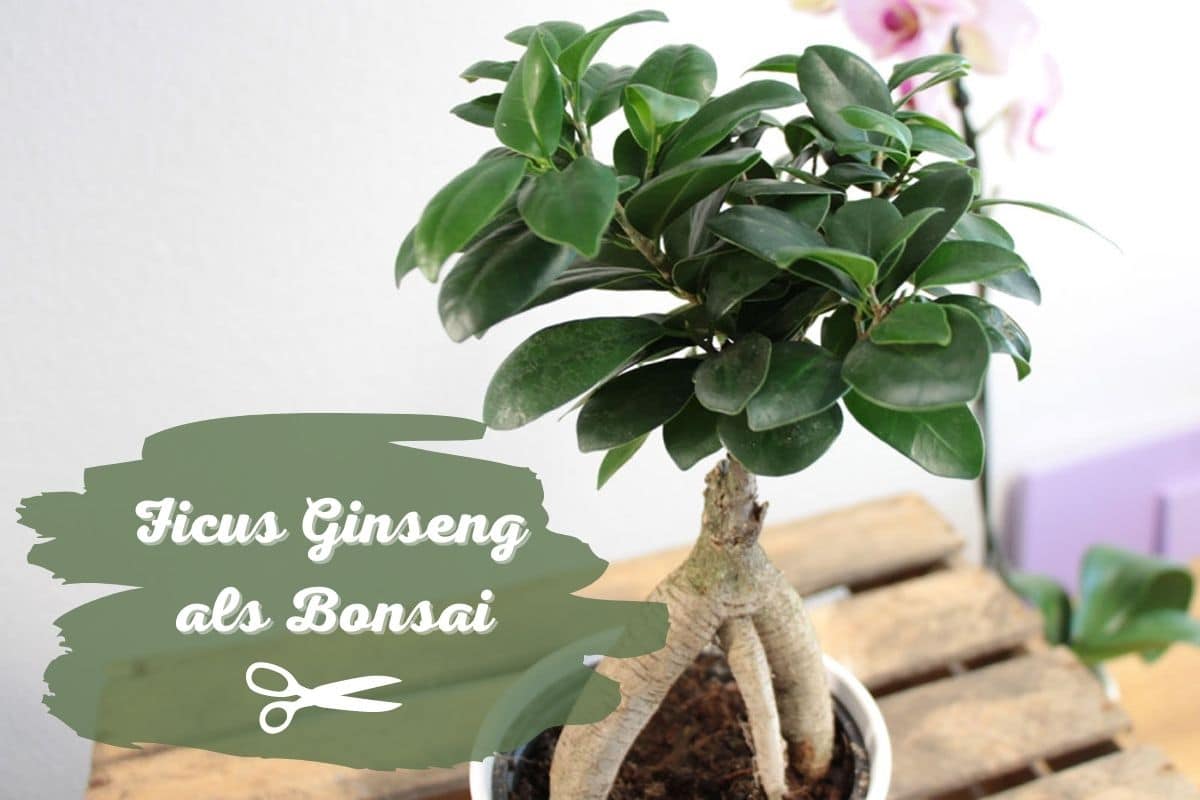
Ficus Ginseng PflegeAnleitung für den Bonsai Gartenlexikon.de
As ginseng ficus trees are fast-growing, they can add 12-36 inches of size in one year. This means the roots will soon outgrow the pot that they are in. Failure to report a bonsai will limit its ability to absorb nutrients in the potting soil, causing it to become weaker and more susceptible to infections and disease.

Ficus Ginseng Bonsai Tartása
Ginseng figs (Ficus microcarpa), also known as curtain figs, ginseng ficus, Indian laurel, or Chinese or Malayan banyans, are incredibly popular as bonsai specimens.That's because they have a thick trunk that looks like it took hundreds of years to develop, but actually takes under a decade - perfect for the impatient bonsai artist.